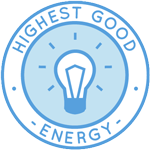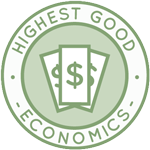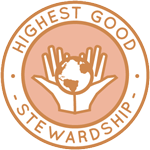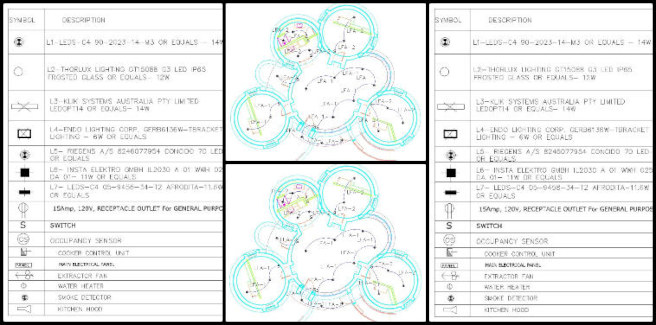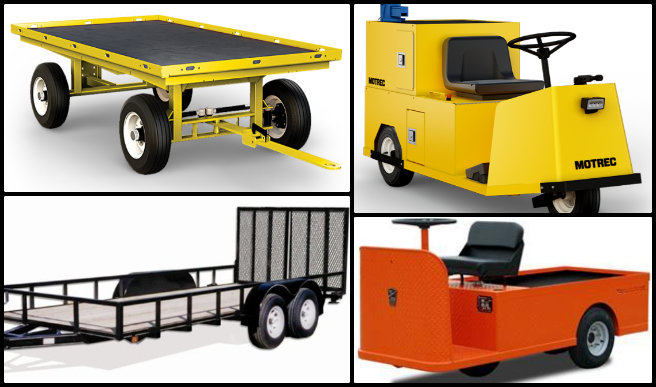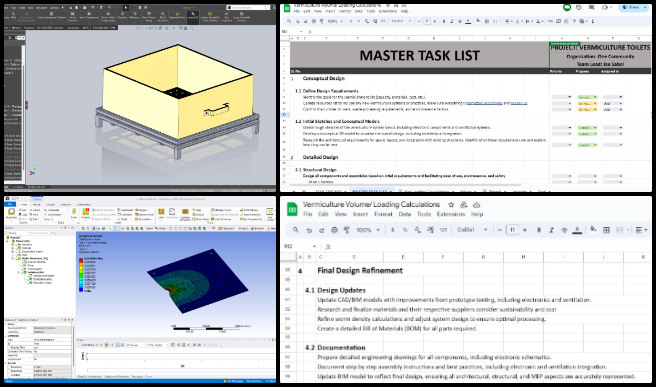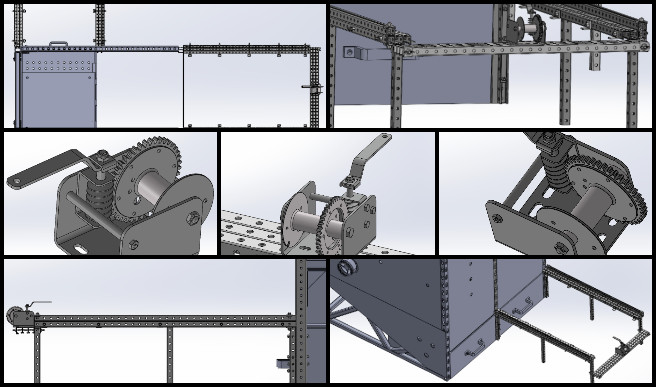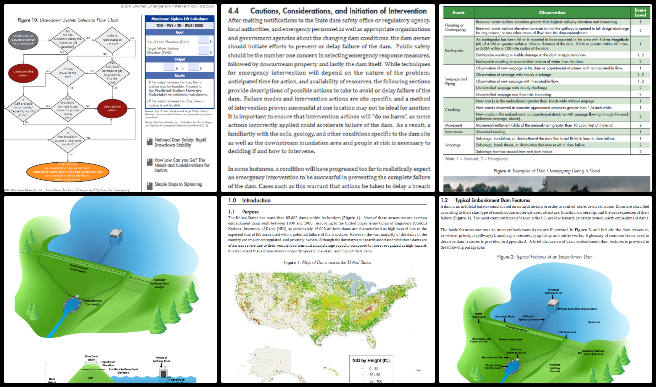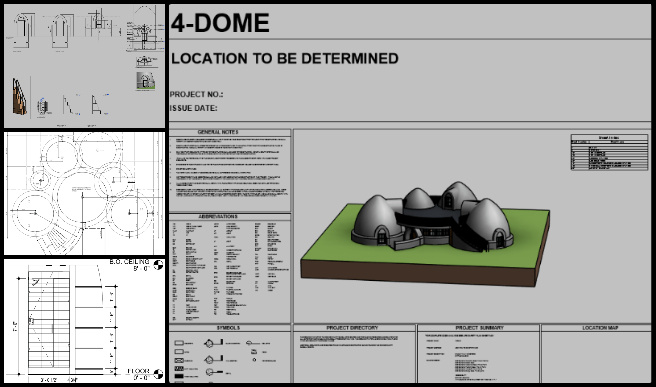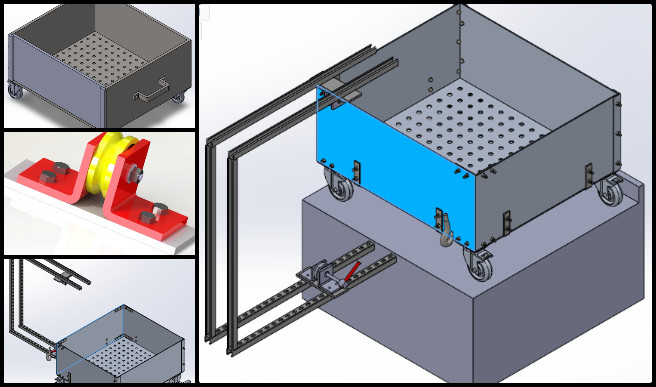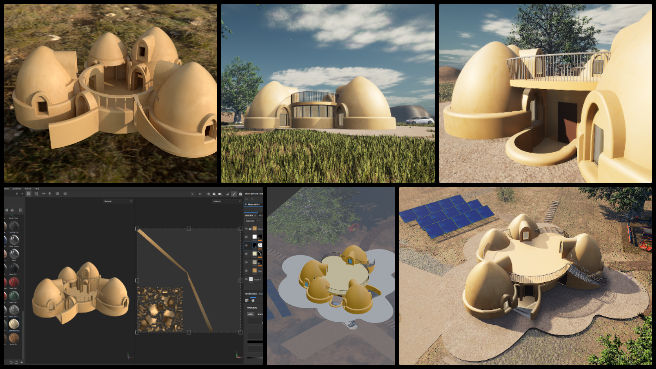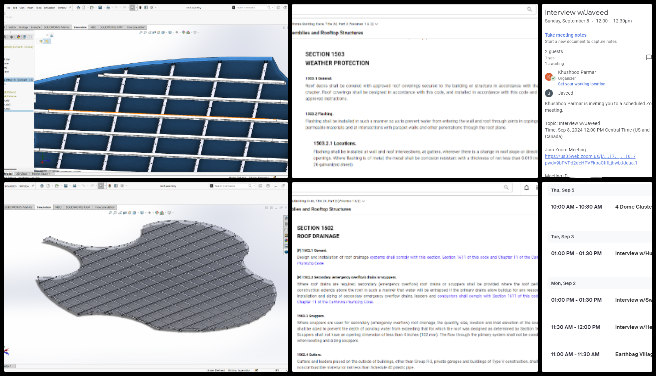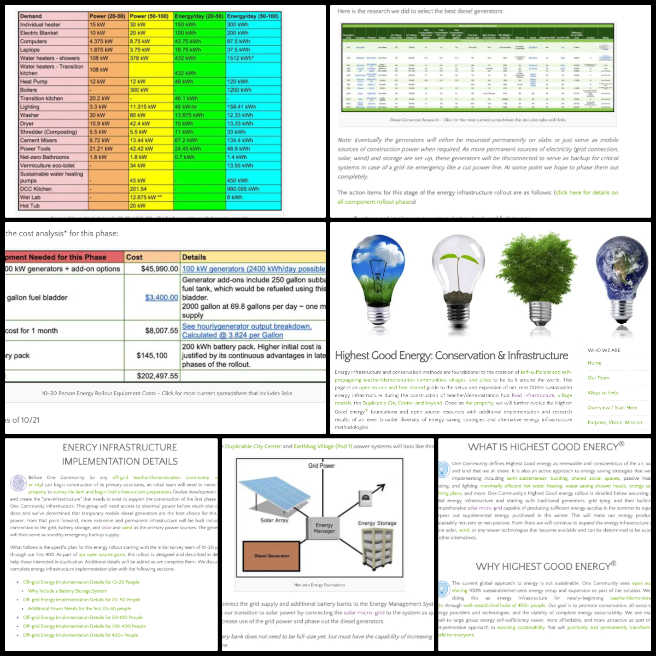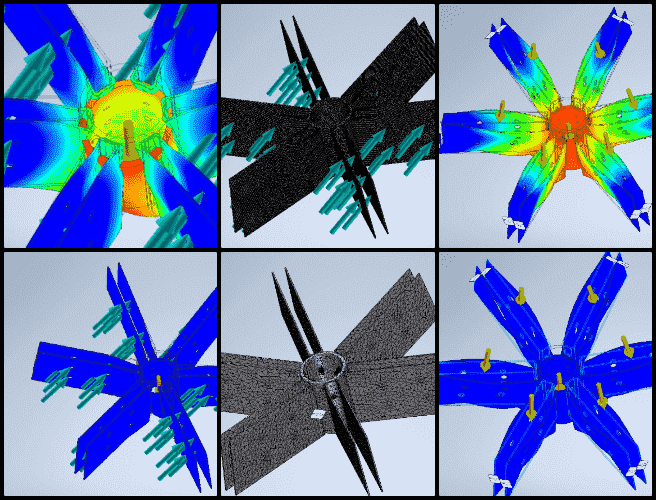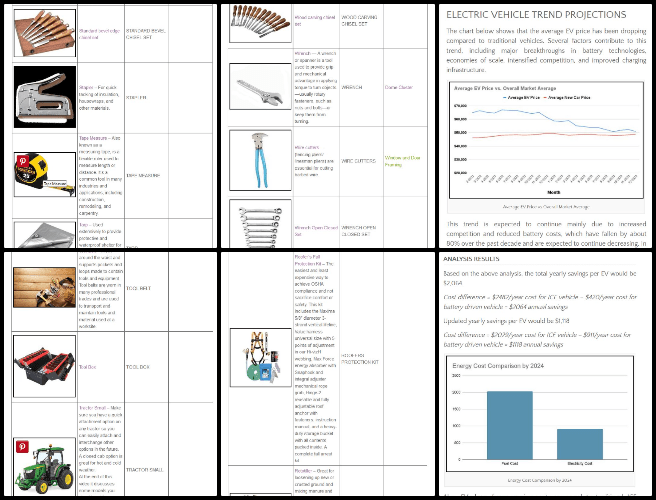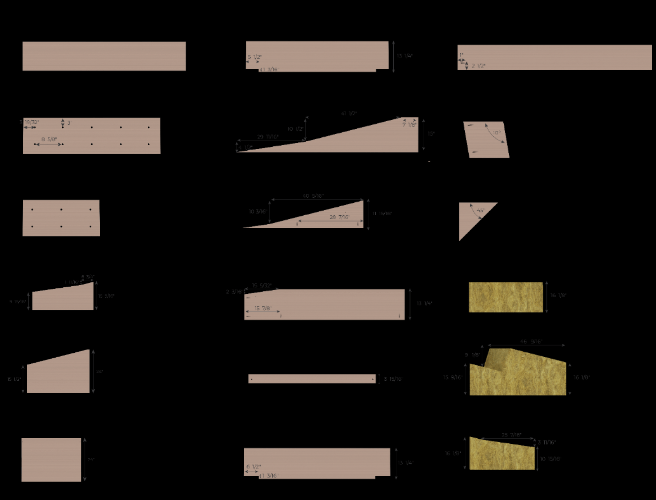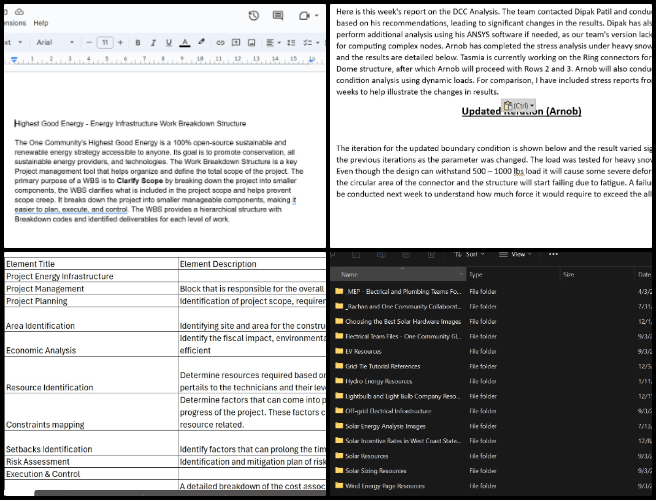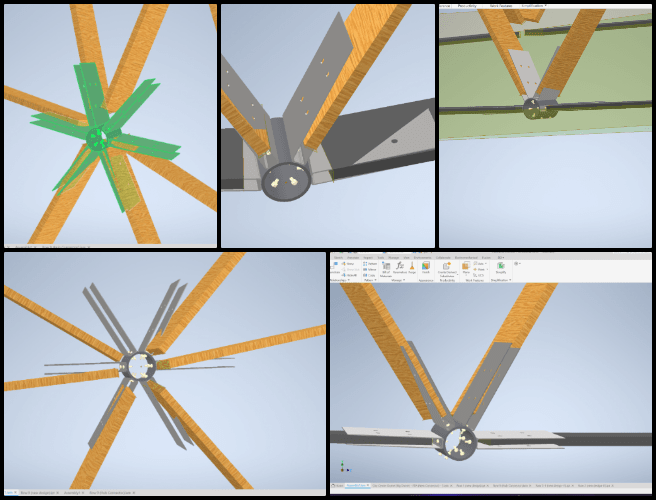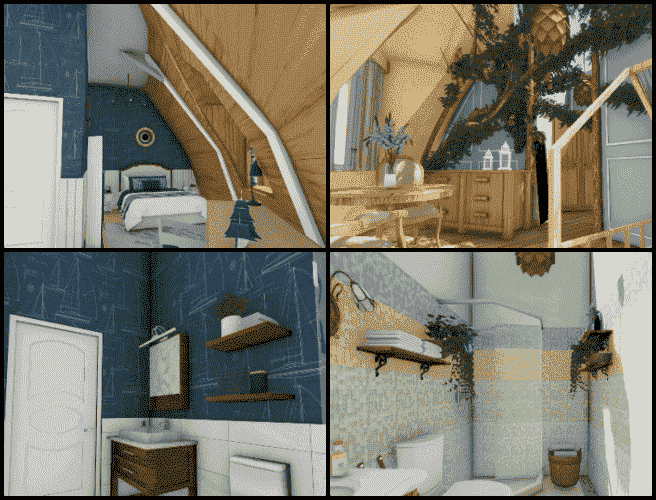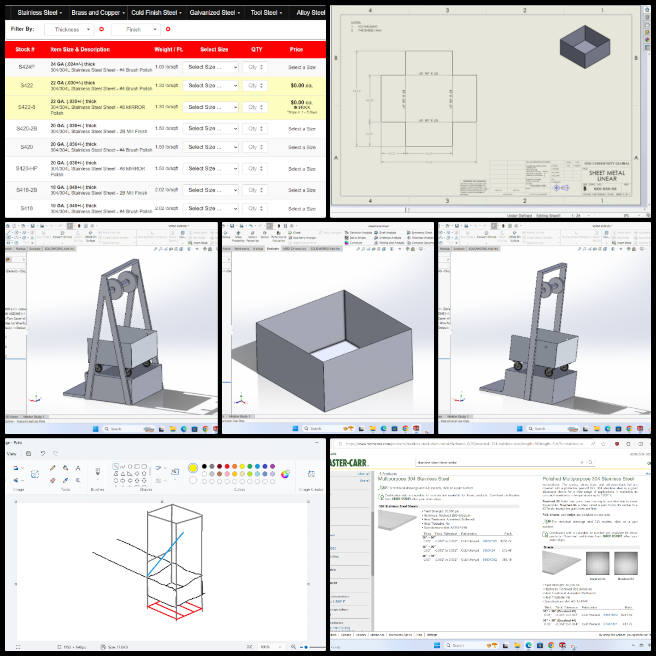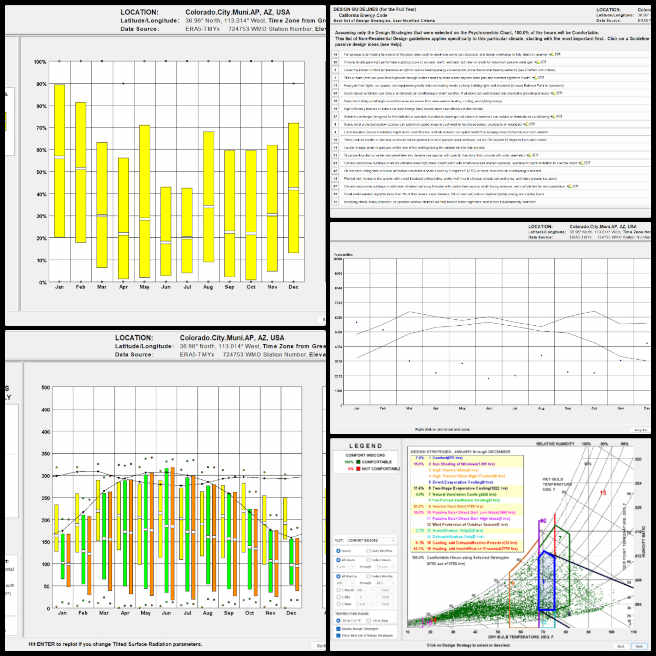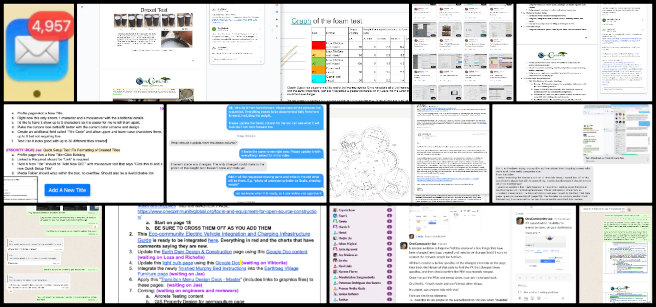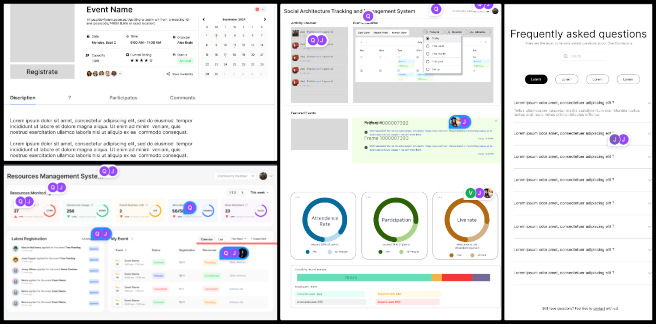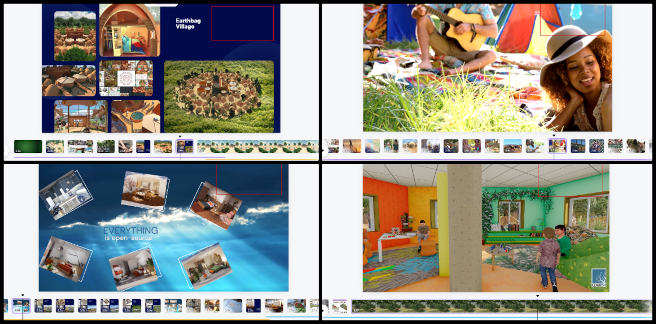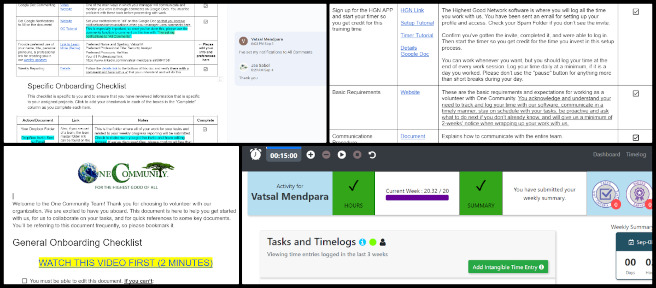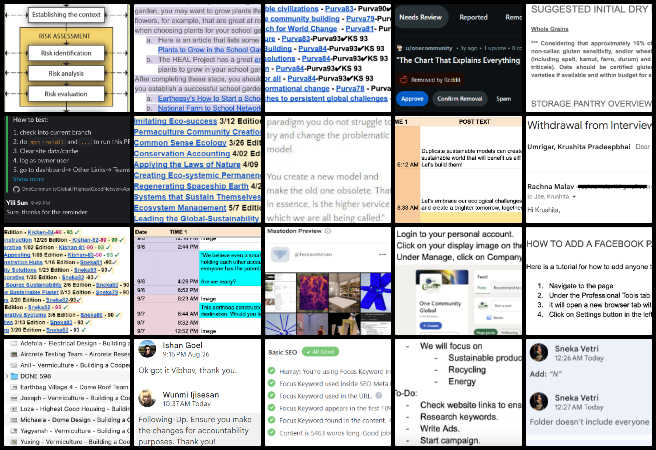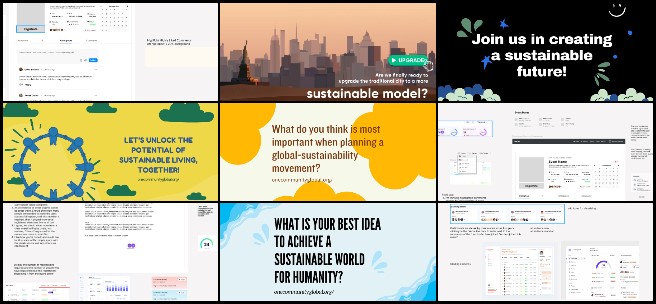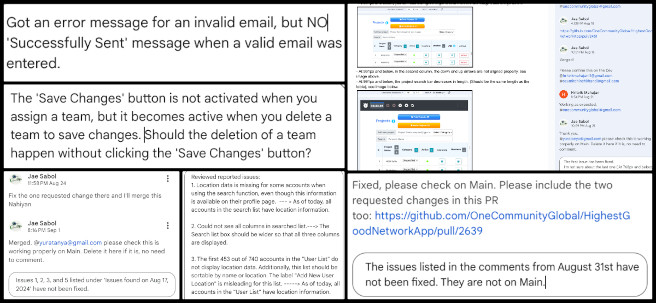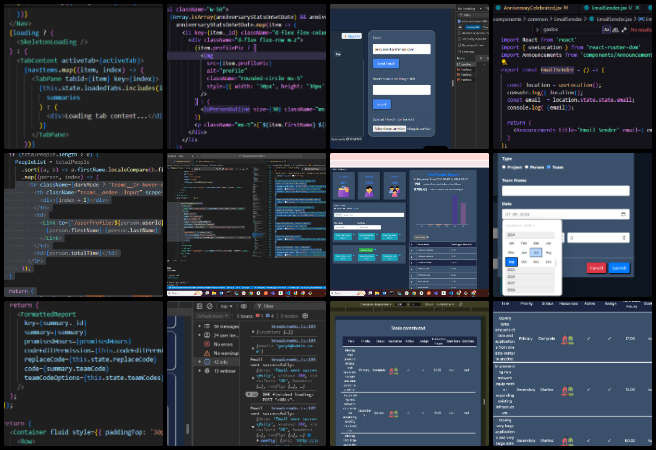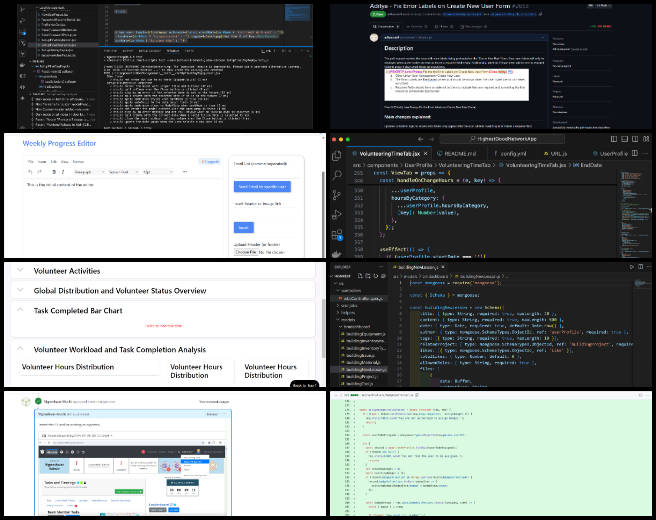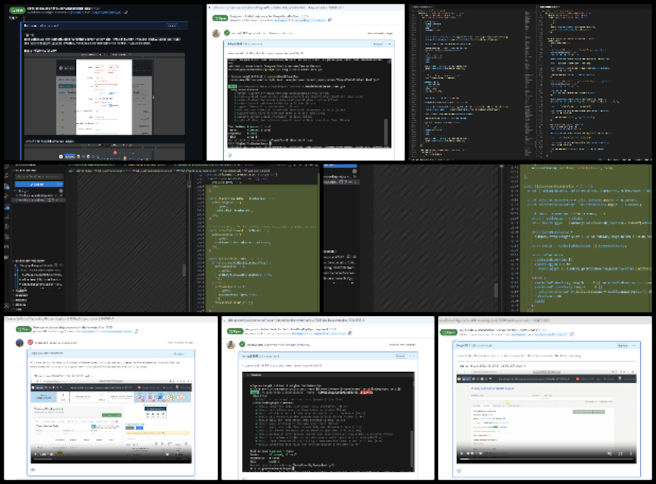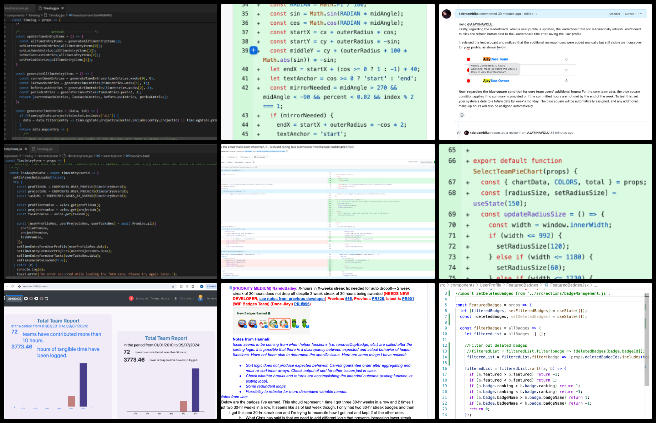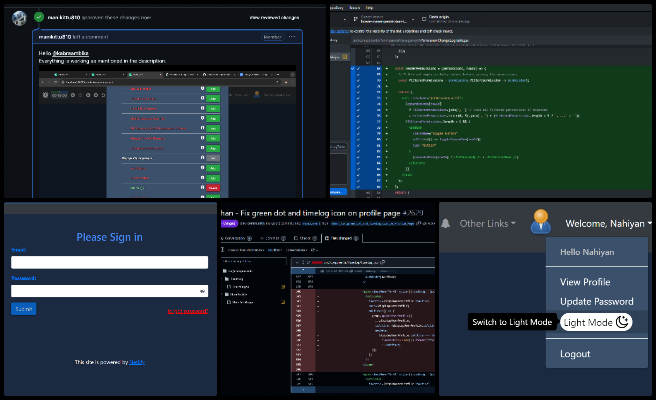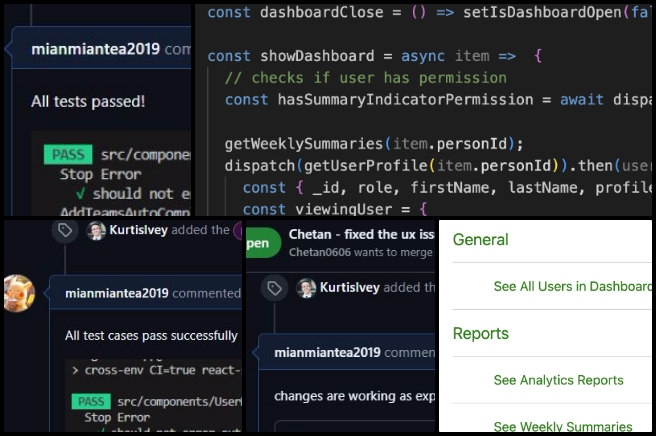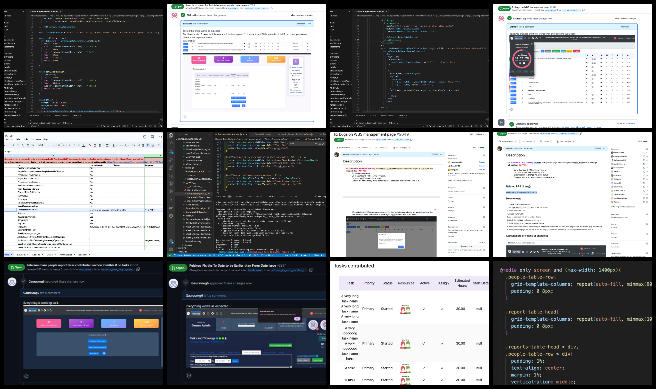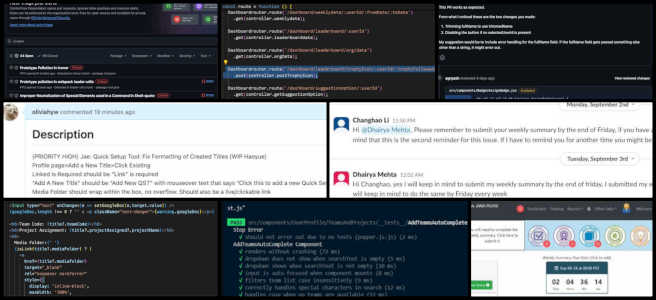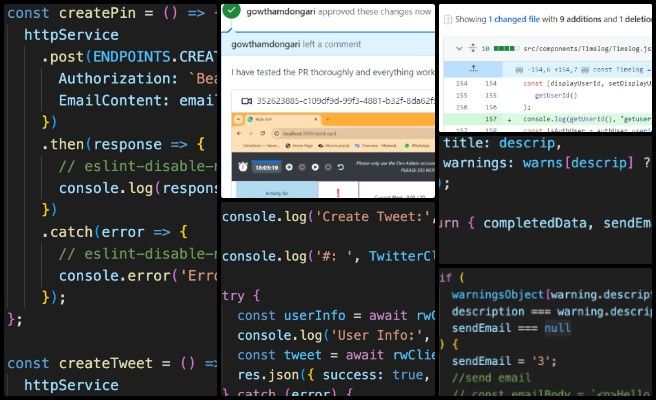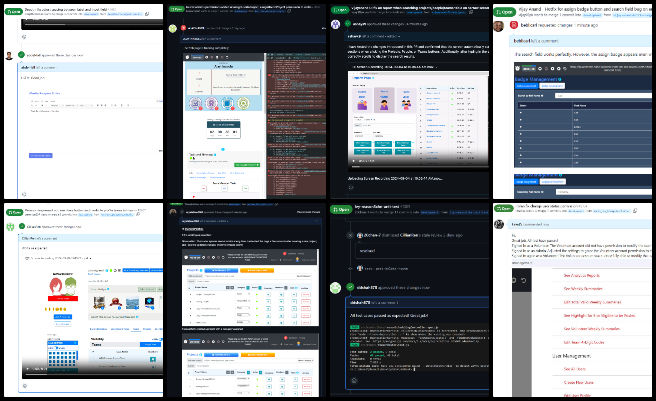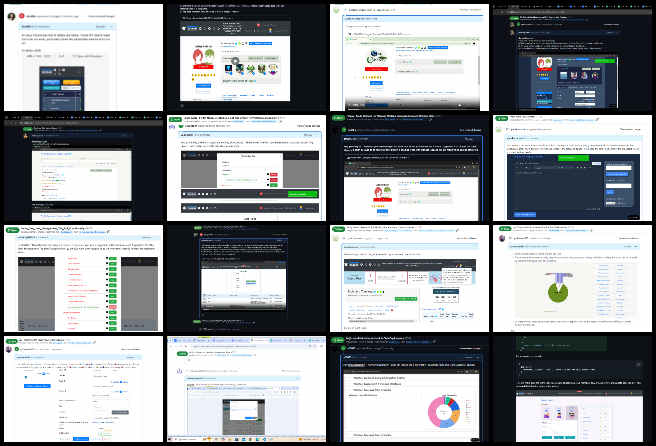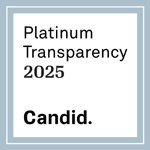Mimicking the Natural Order with Complex Systems – One Community Weekly Progress Update #599
At One Community, our mission is mimicking the natural order with complex systems to create sustainable approaches to food, energy, housing, education, and economics. Our all-volunteer team is developing a self-replicating model that promotes fulfilled living and global stewardship practices. By open sourcing and free sharing every aspect of our work, we aim to establish a global network of teacher/demonstration hubs focused on regenerating our planet and evolving sustainability for “The Highest Good of All“.
- Here’s our project overview
- Here’s our world-change methodology
- Here’s how this becomes self-replicating
- Here’s how we are open source and free-sharing all the do-it-yourself designs
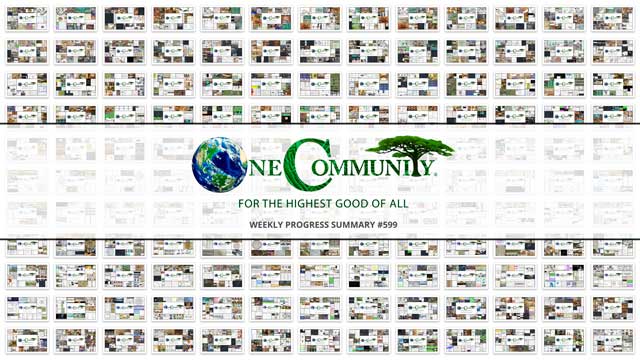
OUR MAIN OPEN SOURCE HUBS
Click on each icon to be taken to the corresponding Highest Good hub page.
One Community’s physical location will forward this movement as the first of many self-replicating teacher/demonstration communities, villages, and cities to be built around the world that demonstrate mimicking the natural order with complex systems. This is the September 9th, 2024 edition (#599) of our weekly progress update detailing our team’s development and accomplishments:
Mimicking the Natural Order with Complex Systems
One Community Progress Update #599
DONATE | COLLABORATE | HELP WITH LARGE-SCALE FUNDING
CLICK HERE IF YOU’D LIKE TO RECEIVE AN EMAIL EACH WEEK WHEN WE RELEASE A NEW UPDATE
YOU CAN ALSO JOIN US THROUGH SOCIAL MEDIA
ONE COMMUNITY WEEKLY UPDATE DETAILS
HIGHEST GOOD HOUSING PROGRESS
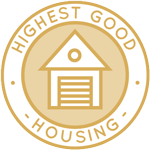 One Community is mimicking the natural order with complex systems through Highest Good housing that is artistic and beautiful, more affordable, more space efficient, lasts longer, DIY buildable, and constructed with healthy and sustainable materials:
One Community is mimicking the natural order with complex systems through Highest Good housing that is artistic and beautiful, more affordable, more space efficient, lasts longer, DIY buildable, and constructed with healthy and sustainable materials:
- Learn about: Our Upcoming Crowdfunding Campaign
- Learn about the different village models: 7 Sustainable Village Models
- Visit the open source portals for the first two: Earthbag Village OS Hub | Straw Bale Village OS Hub
This week, Adefola Madehin (Electrical Design Specialist) continued his work with Earthbag Village designs. Fola completed the lighting circuit and cable wiring for the first floor of the Earthbag 4 Dome Village project. Switches were placed and connected to the wiring for the lighting fixtures as part of the electrical design. The lettering for the electrical circuit was also completed. The Earthbag Village is the first of 7 to be built as the housing component of One Community’s open source model for mimicking the natural order with complex systems. See some of his work in the collage below.
Adil (Engineer) began working on Vermiculture Toilet designs. He researched various electric utility vehicles suitable for towing trailers loaded with filled containers. The research included a review of different trailers that met the required dimensions, loading capacity, and gross vehicle weight rating. Several options were selected for further discussion, and key requirements and conditions for electric vehicles towing additional weight beyond their load capacity were studied. The total power requirements of the vehicles and potential issues related to towing were also examined. This model aims to offer sustainable solutions that not only address waste processing but also enhance living standards by mimicking the natural order with complex systems. See below for some of the pictures related to this work.
Anil Karathra (Mechanical Engineer) continued working on Vermiculture Toilet designs. Anil refined the task list based on feedback and created a master task list spreadsheet to track all project steps. He continued working on the task list while participating in the weekly team meeting. The task list spreadsheet was completed, and time was spent reviewing the team management document as well as researching swiveling saddle jack and ventilation requirements. Anil revised the CAD model of the dumping system concept, updated the task list, and explored the need for an additional attachment on the slider to handle hammer impact. Further research was done, including finite element analysis (FEA), to assess the requirement for an additional plate on the slider to absorb hammer impacts. This model aims to offer sustainable solutions that not only address waste processing but also enhance living standards by mimicking the natural order with complex systems. The approach of mimicking the natural order with complex systems enables the development of innovative solutions that are both environmentally friendly and effective. See below for some of the pictures related to this work.
Joseph Osayande (Mechanical Engineer) continued helping finish the Vermiculture Toilet engineering and design details. Joseph worked on the moving piece of the waste removal standing system, focusing on the section that houses the winch, which is designed to move between two positions. A winch was identified that meets the requirements for pulling out both the drawer and the flat plate. A worm winch with a gear ratio of 40:1 was modeled using an online blueprint, and it was screwed onto the platform to ensure proper positioning and functionality within the system. This model aims to offer sustainable solutions that not only address waste processing but also enhance living standards by mimicking the natural order with complex systems. See below for some of the pictures related to this work.
Loza Ayehutsega (Civil Engineer/Assistant Civil Engineer) completed another week working on the Earth Dam risk assessment and dam break hazard assessment. Loza worked on Identifying Emergency Conditions at Dams with image and a better explanation. A great reference book is found for this topic. Case study investigation will be included on the report. Identified emergency conditions at dams, which is critical for ensuring public safety, infrastructure protection, and environmental conservation. Ensuring dam safety measures and preparedness are a foundation of One Community’s open source earthworks as part of mimicking the natural order with complex systems. See the pictures below for examples related to her work.
Michaela Silva (Architect) continued working on finalizing the interior of the Earthbag Village 4-dome home design. Michaela added details to the construction documents and updated the Revit titleblock file to include an option for a cover page. She populated the cover page with project type information and relevant codes. Michaela also created a sheet index and began adding general notes to the cover page. Additionally, she created and placed several base views on sheets as placeholders until the detailed information is completed. The Earthbag village is the first of 7 villages to be built as part of One Community’s open source model for mimicking the natural order with complex systems. See her work in the collage below.
Yagyansh Maheshwari (Mechanical Engineer) continued helping finish the Vermiculture Toilet engineering and design details. Yagyansh focused on designing methods for efficiently dumping compost on the ground. He made modifications to the drawer and its materials in SolidWorks, a mechanism to assist with emptying the drawer, and improvements to the pulley design. He explored options for transferring the drawer to the dumping site, that met the required weight capacity, and performed torque calculations for tipping the drawer. Additionally, he shifted the wheel assembly a little to the inside to make room for the new disposing method. The Earthbag Village is the first of 7 to be built as the housing component of One Community’s open source model for mimicking the natural order with complex systems. See some of his work in the collage below.
Yuxing Xu (VFX Artist) continued working on making videos for the Earthbag Village 4-dome home design. Yuxing worked on enhancing the texture components of the 4-dome project and refining the overall site layout. He cleaned up the building mesh and corrected the UV mapping to ensure compatibility with a PBR texture paint workflow. Customized texture maps were created in Substance Painter and applied in Unreal Engine to improve the exterior building materials. Additionally, he modeled the hard ground tile for the ground floor in Blender, ensuring the hard surface appeared functional in the architectural visualization. The Earthbag Village is the first of 7 to be built as the housing component of One Community’s open source model for mimicking the natural order with complex systems. See some of his work in the collage below.
EARTHBAG VILLAGE 4-DOME ROOF TEAM
The Earthbag Village 4-dome Roof Team was managed by Khushboo Parmar (Project Manager) and includes Karthik Pillai (Volunteer Mechanical Engineer) and Yusuf Thanawala (Structural Engineer). The Earthbag Village is the first of 7 villages creating One Community’s open source model for mimicking the natural order with complex systems through sustainable housing. Khushboo continued her research of California building codes related to deck roofs and environmentally sustainable deck materials. She prepared a document for the 4-Dome Cluster Roof project to aid its advancement. Additionally, she managed administrative tasks, including scheduling and interviewing volunteer candidates. Khushboo also manages Michaela Silva and Adefola Madehin. Meanwhile, Karthik designed a roof framework using Unistruts, which was reviewed and discussed in the team meeting. However, Yusuf evaluated Unistrut for strength and stability as an alternative to wood for the roof deck, considering its lower cost. However, after analysis and reviewing the sizes provided on the manufacturer’s website, it was determined that Unistrut may not be adequate. In addition to this, he continued working on design calculations and beam sizing for wood. The Earthbag village is an integral part of One Community’s open source model for mimicking the natural order with complex systems. See their work in the collage below.
DUPLICABLE CITY CENTER PROGRESS
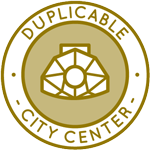 One Community is mimicking the natural order with complex systems through a Duplicable and Sustainable City Center that is LEED Platinum certified/Sustainable, can feed 200 people at a time, provide laundry for over 300 people, is beautiful, spacious, and saves resources, money, and space:
One Community is mimicking the natural order with complex systems through a Duplicable and Sustainable City Center that is LEED Platinum certified/Sustainable, can feed 200 people at a time, provide laundry for over 300 people, is beautiful, spacious, and saves resources, money, and space:
- Learn about this building and it’s function in mimicking the natural order with complex systems: Duplicable City Center Open Source Hub
This week, the core team continued their research on the Highest Good Energy and began organizing items from the Master List and the Highest Good Energy Page for the Highest Good Tools, Equipment, Materials/Supplies list. They focused on larger pieces of equipment and created narratives and accessed photos to align with the intended list according to their respective categories. One Community’s open-source initiative for mimicking the natural order with complex systems includes the Duplicable City Center as a central component. See the images of this work below.
Arnob Mutsuddi (Mechanical Engineer)continued working on Duplicable City Center structural engineering model and details. He collaborated with a previous engineer, Dipak, to review the appropriate boundary conditions and work on reducing nodes in Ansys. Due to software node limitations, the decision was made to shift the project to Autodesk Inventor. A new iteration was developed with updated boundary conditions for the U-hub, applying a 1000 lbs force, which showed a significant difference from previous stress tests. A one-on-one discussion with Tasmia was held to divide the work progress. Load calculations from a previous design were analyzed to incorporate them into the new hub connector design. A tabular report was prepared for the previous iteration, and a new load test using 500 lbs was initiated with updated mesh and boundary conditions. Tabular reports were created for the updated iterations with 500 – 1000 lbs loads. The Duplicable City Center is a foundational part of One Community’s open-source, which excels in mimicking the natural order with complex systems. This approach is integral to their mission of mimicking the natural order with complex systems through innovative and scalable solutions. See some of this work in the pictures below.
Charles Gooley (Web Designer)continued working on the Transition Food Self-sufficiency Plan. He updated the Tools and Equipment for Open Source Construction master page by incorporating additional tools from the non-powered tools section, specifically from the Highest Good Food Tools, Equipment, Materials/Supplies design document. This task required resizing images and copying text from the design document, while ensuring that links were visible in the address bar when clicked. Some duplicates were excluded from the update. Additionally, content, including images and text, was added to the Eco-community Electric Vehicle Integration and Charging Infrastructure Guide page. The Duplicable City Center is a foundational part of One Community’s open-source model for mimicking the natural order with complex systems. Take a look at some of this work in the images below.
Chris Blair (GIS Technician/Horticulturist)continued working with GIS data as part of One Community’s Permaculture Design that includes the location of the Duplicable City Center. He continued learning how to use QGIS, an open-source GIS software, with the goal of recreating his previous work from proprietary software to improve future access to the data. He experimented with various watershed tools, identified seven basin catchment areas on the property, and used symbology to differentiate the types of tributaries that would appear during a rain event. Within One Community’s open-sourceframework, the Duplicable City Center plays a central role in mimicking the natural order with complex systems. The images below showcase some of this work.
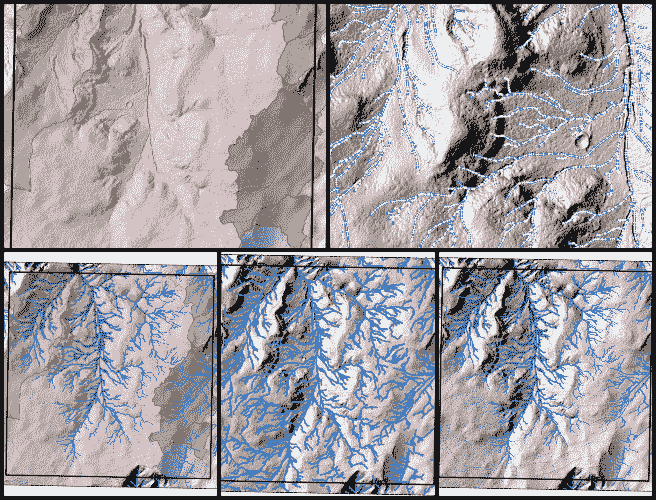
Faeq Abu Alia (Architectural Engineer) continued his work on the Duplicable City Center kitchen shelving and adding dry-storage food items. He completed the editing of the kitchen shelves and storage based on the latest feedback, and finalized the video edits for the kitchen storage. Walkthrough videos for rooms 1, 2, and 3 were created after making corrections in SketchUp, followed by the completion of the walkthrough video for room 4, incorporating the necessary adjustments. The Duplicable City Center represents a fundamental element of One Community’s open-source approach, dedicated to mimicking the natural order with complex systems. View examples of this work in the pictures provided below.
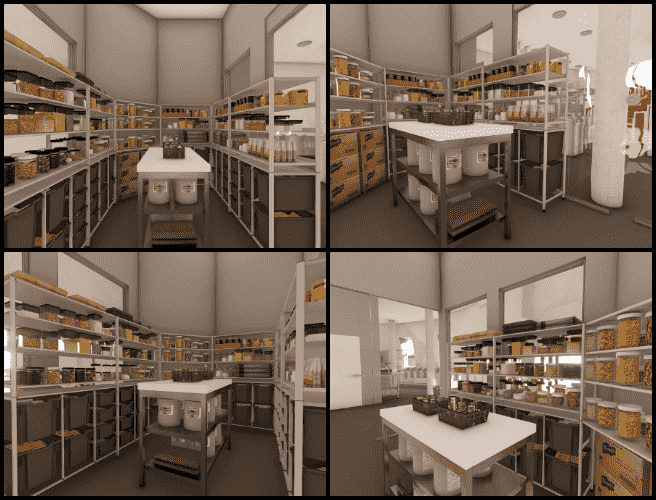
Nika Gavran (Industrial Designer) continued her work on the Duplicable City Center dormer window installation plans. She focused on expanding the final document for the dormer window instructions, incorporating feedback on the previously completed slides. Nika added further dimensions to some pieces and included a newly rendered image of the insulation with dimensions. She ensured all dimensions were included and adjusted their color for better visibility. She also worked on improving the overall graphic design of the dimensions and will continue refining and expanding the document next week. As a foundational component of One Community’s open-source strategy, the Duplicable City Center is designed for mimicking the natural order with complex systems. The images below showcase some of this work.
Panambur Rachan Rao (Project Manager) continued work on reviewing and organizing everything related to wrapping up the Highest Good Energy component. He updated both the Work Breakdown Structure and the Risk Assessment and created a Google Doc version that is now accessible to everyone. The Google Doc is still a work in progress. Additionally, Rachan Rao met with the Duplicable City Center analysis team and documented their updates. The team reached out to Dipak Patil, and followed his guidance for their analysis, and Rachan then incorporated the results into the report. Within One Community’s open-source framework, the Duplicable City Center plays a central role in mimicking the natural order with complex systems. Take a look at some of this work in the images below.
Tasmia Hasan (Design Engineer) continued her work on the structural engineering of the Duplicable City Center. She met with Arnob and Rachan to gain a better understanding of the load analysis process and the necessary adjustments based on weather conditions. Tasmia and Arnob decided to divide the calculation work and focus on the dome structure. Tasmia worked on connecting the new hub connector to the first row, with some connections still requiring review with Arnob. As a foundational component of One Community’s open-source strategy, the Duplicable City Center is designed for mimicking the natural order with complex systems. You can see examples of this work in the following images.
Vika Zakharova (Administrative Assistant) helped as part of the hiring team, training team, and conducing research for the Most Sustainable Lightbulbs and Light Bulb Companies page. For the hiring team, she scheduled two interviews and conducted one, welcoming a new volunteer to the team. As a training team associate, she reviewed one training assignment and initiated work on two others. Her approach to these tasks was characterized by mimicking the natural order with complex systems, ensuring that each process flowed seamlessly and efficiently. Her research focused on updating and identifying sustainable lightbulb options for the Duplicable City Center and One Community’s educational resources. This included reviewing 24 scientific papers to extract relevant findings for establishing sustainable metrics for various lightbulb types, and evaluating Ikea as a potential vendor for sustainable lightbulbs. The Duplicable City Center represents a fundamental element of One Community’s open-source approach, dedicated to mimicking the natural order with complex systems. View examples of this work in the pictures provided below.
Yancong E (Architectural Designer) joined the team and focused on becoming familiar with the Duplicable City Center project. This included reviewing the “Duplicable City Center Heating and Cooling” page to understand how LEED standards could be applied to the project. Yancong also worked on rendering animations for two of the bedrooms and identified issues in the SketchUp model that required further discussion with the supervisor. The Duplicable City Center represents a fundamental element of One Community’s open-source approach, dedicated to mimicking the natural order with complex systems. You can see examples of this work in the following images.
HIGHEST GOOD FOOD PROGRESS
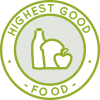 One Community is mimicking the natural order with complex systems through Highest Good food that is more diverse, more nutritious, locally grown and sustainable, and part of our open source botanical garden model to support and share bio-diversity:
One Community is mimicking the natural order with complex systems through Highest Good food that is more diverse, more nutritious, locally grown and sustainable, and part of our open source botanical garden model to support and share bio-diversity:
- Learn about the structures: Hoop House Hub | Aquapini & Walipini Open Source Hub
- See what we’ll be growing and mimicking the natural order with complex systems: Gardens & Hoop Houses | Large-scale Structures | Food Forest | TA
This week, Hayley Rosario (Sustainability Research Assistant) continued her work on the Vermiculture Toilet component that will produce compost as part of the Highest Good Food project. She focused on designing a pulley system and attended a meeting where she was assigned the task of creating a 1mm stainless steel sheet metal liner for the vermiculture drawer. This involved both 3D modeling and 2D drafting to determine the correct overall dimensions needed for the liner to source an accurate sheet metal plate. While working on a cost analysis, she encountered a challenge in finding an option for a larger sheet metal plate and plans to address this issue further. Additionally, she developed a pin and flat design for the dumping mechanism of the drawer. The Highest Good Food initiative is a key component of One Community’s open source plans, dedicated to mimicking the natural order with complex systems. This approach is critical to mimicking the natural order with complex systems and ensures alignment with the initiative’s goals. See her work in the collage below.
Jay Nair (BIM Designer) continued working on Aquapini and Walipini Planting and Harvesting lighting and HVAC design. He worked on refining the solar integration strategies and updating the documentation for Walipini #1. Challenges arose while aligning the solar strategies with the architectural design, necessitating several adjustments to optimize energy readings for a detailed energy analysis. Additionally, progress was made on accessing climate data using the Climate Consultant software, though issues with data importation required resolution to extract vital information on temperature, solar radiation, and humidity. The Highest Good Food initiative is a key component of One Community’s open source plans, dedicated to mimicking the natural order with complex systems, and exemplifies the organization’s commitment to mimicking the natural order with complex systems through innovative design and implementation. Below are some of the images showcasing this work.
HIGHEST GOOD EDUCATION PROGRESS
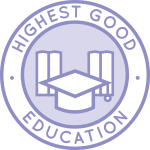 One Community is mimicking the natural order with complex systems through Highest Good education that is for all ages, applicable in any environment, adaptable to individual needs, far exceeds traditional education standards, and more fun for both the teachers and the students. This component of One Community is about 95% complete with only the Open Source School Licensing and Ultimate Classroom construction and assembly details remaining to be finished. With over 8 years of work invested in the process, the sections below are all complete until we move onto the property and continue the development and open sourcing process with teachers and students – a development process that is built directly into the structure of the education program and everything else we’re creating too:
One Community is mimicking the natural order with complex systems through Highest Good education that is for all ages, applicable in any environment, adaptable to individual needs, far exceeds traditional education standards, and more fun for both the teachers and the students. This component of One Community is about 95% complete with only the Open Source School Licensing and Ultimate Classroom construction and assembly details remaining to be finished. With over 8 years of work invested in the process, the sections below are all complete until we move onto the property and continue the development and open sourcing process with teachers and students – a development process that is built directly into the structure of the education program and everything else we’re creating too:
- Program Overview: Education Open Source Hub
- How the components work together in mimicking the natural order with complex systems: How to use the Education for Life Program
- Lesson Plans for Life – Lesson Plans How-to
- Foundations of Outstanding Leaders, Teachers, and Communicators
- Curriculum for Life
- Teaching Strategies for Life
- Learning Tools and Toys for Life
- Evaluation and Evolution
This week, Apoorv Pandey (Mechanical Engineer) continued helping with the engineering details for the Ultimate Classroom part of the Highest Good Education component. He continued working on the second draft of the Structural Engineering Report for the Ultimate Classroom Project. He focused on formatting the report to ensure it was easily understandable by both engineers and laypersons, explaining each section such as the introduction and project scope clearly. Apoorv used other published pages on One Community’s website as references to guide his work. He worked closely with his manager Brian Muigai Mwaniki (Structural Engineer), to discuss the technical issues. The One Community model of combining forward-thinking education with sustainably built classrooms like this is an excellent example of mimicking the natural order with complex systems. This approach truly exemplifies mimicking the natural order with complex systems by creating environments that foster collaboration and innovation. See the collage below for his work.
HIGHEST GOOD SOCIETY PROGRESS
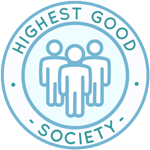 One Community is mimicking the natural order with complex systems through a Highest Good society approach to living that is founded on fulfilled living, the study of meeting human needs, Community, and making a difference in the world:
One Community is mimicking the natural order with complex systems through a Highest Good society approach to living that is founded on fulfilled living, the study of meeting human needs, Community, and making a difference in the world:
- Read the Highest Good society overview: Highest Good Society
- Learn about the model for fulfilled living and sharing: A Day in the Life
- Learn about the 4 economic models: RBE | For-profit | Non-profit | Entrepreneurship
- Learn about our open source community collaboration and management software: The Highest Good Network
This week, the core team completed over 67 hours managing One Community’s volunteer-work review not included above, emails, social media accounts, web development, new bug identification and bug-fix integration for the Highest Good Network software, and interviewing and getting set up new volunteer team members. They also shot and incorporated the video above that talks about mimicking the natural order with complex systems and how mimicking the natural order with complex systems is a foundation of the bigger picture of everything One Community is doing. The image below shows some of this work.
Jia Shu (UX Designer) continued her work on the Highest Good Network phase 3 development that focuses on organizing and tracking the Fulfilled Living aspect of the Highest Good Society component. She collaborated with Jae on refining the design of Phase 3, focusing on epics, user stories, tasks, and priorities. Feedback on low-fidelity prototypes led to the creation of mid-fidelity versions, and she studied web design and iOS/Android design systems to optimize the user experience. The design system around six epics and their user stories is taking shape, with specific tasks for each epic still being defined. The UI system, including colors and icons, is halfway through completion. In this process, they emphasized mimicking the natural order with complex systems to ensure a seamless and intuitive user experience. She further concentrated on making iterations based on Jae’s feedback and enhancing the original design for logging participation and attendance for each activity. Separate workflows for organizers and members, each featuring functions like recording attendee information and scanning QR codes for registration, were defined. Following feedback from Joe’s video, Jia incorporated changes such as a QR code scan feature in the check-in process, an updated pop-up style notification system with response options, improved visual UI for activity attendance rates, and enhanced filter and rating options in the comments section, along with other UI refinements. This work aligns with One Community’s mission of mimicking the natural order with complex systems. The picture below shows some of this work.
Shireen Kayal (Humanitarian Program Developer & Data Manager) created an updated version of the weekly progress video. Paying attention to detail, she curated pertinent footage, removed superfluous stock materials, and integrated additional content from One Community’s provided resources. The resulting video is designed to highlight the diverse and impactful work of One Community, conveying the organization’s mission and goals to a wider audience. This work helps One Community’s mission of mimicking the natural order with complex systems. The following images show her work for the week.
Vatsal Mendpara (Security Analyst) completed the orientation program, following every step outlined in the process. He also focused on setting up accounts on various platforms as directed by Jae, utilizing the provided links for access. Then Vatsal took the initiative to review the detailed emails about the system transfer to Bluehost. This involved careful analysis and proactive problem-solving to identify and address potential issues that might arise during the transfer process. This work helps One Community’s mission of mimicking the natural order with complex systems. The images below show his work for the week, further reflecting the commitment to mimicking the natural order with complex systems in every aspect.
ADMINISTRATION TEAM
The Administration Team’s summary, covering their work administrating and managing most of One Community’s ongoing process for mimicking the natural order with complex systems was managed by Sneka Vetriappan (Data Analyst) and includes Durgeshwari Naikwade (Data Analyst), Feras Rehman (Data Analyst), Hritvik Mahajan (Data Analyst), Ivy Yuwei Li (Project Manager and Team Administrator), Jessica Fairbanks (Administrative Assistant), Kishan Sivakumar (Administative Assistant and Software Team Manager), Michael Juma (Administrative Assistant), Olawunmi “Ola” Ijisesan (Administrative and Management Support), Praneeth Kruthiventi (Data Analyst), Rachna Malav (Data Analyst), Rahul Bavanandan (Data Analyst), Ratna Meena Shivakumar (Data Analyst and Admin), Riddhisha Chitwadgi (Administrative Assistant), Ruiqi Liu (Administrative Assistant), Saumit Chinchkhandi (Administrative Assistant and Software Engineer), T R Samarth Urs (Data Analyst), Venkat Reddy Mankala (Data Analyst and Team Administrator), Vibhav Chimatapu (Data Analyst/Admin Assistant), and Zuqi Li (Administrative Assistant and Economic Analyst). This week, Durgeshwari participated in four interviews, provided feedback to new trainees, worked on LinkedIn posts, and handled research for analytics and strategy. Feras focused on a weekly review and training session, formatted blog summaries, reviewed social media documentation, set up a new account, completed a Mastodon tutorial, and reviewed admin training work. Hritvik completed the Highest Good Food blog and collages, followed up on PRs, created content for Twitter posts, and reviewed feedback from Feras and Jae. Ivy continued to work on the Food Procurement Plan, incorporating feedback from Jae. The team’s efforts in mimicking the natural order with complex systems were evident in their seamless integration of tasks and feedback. Jessica advanced the Highest Good Food Infrastructure Rollout plan, wrote procedures for school gardens, and completed research on food forest programs. Kishan worked on the weekly update blog, focused on SEO optimization, and reviewed optimized pages. Michael prepared summaries for the Reactonauts team, evaluated team managers, reviewed admin feedback, and edited documents. Ola reviewed PR Managers’ work, updated the PR table, monitored HGN tracking, trained new volunteers, and managed the social media schedule, while mimicking the natural order with complex systems to streamline processes effectively. Praneeth K researched Google Ads, added instructions to legacy documentation, explored best practices, and reviewed training exercises. Rachna scheduled interviews, assigned SEO pages, and engaged in email exchanges with candidates. Rahul examined data strategies, explored Reddit’s posting mechanisms, refined instructions for Reddit moderators, and provided feedback on documents. Ratna prepared weekly summaries, reviewed emails for interviews, updated blogs, and scheduled posts for social media. Riddhisha reviewed housing team images, created collages, optimized SEO for blog #598, and assessed training for new members, emphasizing mimicking the natural order with complex systems in his approach to streamline operations. Ruiqi completed the review process for the Dev Dynasty and Git-R-Done Team, managed bio announcements, and continued working on DIY Earth Dam Design content. Saumit interviewed potential volunteers, managed frontend testing for PRs, communicated with developers, reviewed PRs, and connected with a new admin volunteer. Samarth managed the PR review team, evaluated their work, provided feedback, and summarized their work in a blog post. Sneka focused on OC Administration tasks, including managing time logs, providing feedback, following up on previous comments, guiding new teammates, adding weekly summaries and collages to the webpage, and reviewing content. Venkat worked on the weekly summary report, reviewed social media posting and analytics, set up tools, and reviewed Muhammad Huzaifah Nazar’s work. Vibhav reviewed the PR Team’s work, created summaries and collages, and optimized webpage SEO. Zuqi organized weekly summaries for the Graphic Design Team and Alpha Team, reviewed manager work, followed up on optimized blogs, and adjusted previous blogs. One Community’s model for mimicking the natural order with complex systems includes developing and maintaining a supportive administration team like this. You can see the work for the team in the image below, showcasing our commitment to mimicking the natural order with complex systems.
GRAPHIC DESIGN TEAM
The Graphic Design Team’s summary was managed by Zuqi Li (Administrative Assistant and Economic Analyst) and included Anusha Tariq (Graphic Designer), Junyuan Liu (Graphic Designer, UI/UX Designer), and Jyotsna Venkatesh (Graphic Designer), covering their work on graphic designs for mimicking the natural order with complex systems. This week, Anusha explored a document and reviewed instructions provided by Jae regarding the creation of social media images. She also watched tutorials and examined templates available in Dropbox, which, along with existing posts, helped her understand the design framework and requirements. Junyuan worked on producing a social media image and made progress on additional ones. He also focused on the event page for HGN Phase 3, completing the basic framework and continuing research and design for various sections of the page, including comments and participants, each with distinct interaction and layout requirements. Jyotsna continued developing brand book guidelines, focusing on brand identity and color, and performed research on brand guidelines used by other companies though reaching a conclusion proved challenging. She also created graphic design images based on the Social Media Images Excel sheet. See the Highest Good Society pages for more on how this contributes to mimicking the natural order with complex systems. See the collage below to view some of their work.
HIGHEST GOOD NETWORK PROGRESS
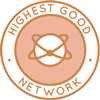 One Community is mimicking the natural order with complex systems through open source Highest Good Network® software that is a web-based application for collaboration, time tracking, and objective data collection. The purpose of the Highest Good Network is to provide software for internal operations and external cooperation. It is being designed for global use in support of the different countries and communities replicating the One Community sustainable village models and related components, mimicking the natural order with complex systems.
One Community is mimicking the natural order with complex systems through open source Highest Good Network® software that is a web-based application for collaboration, time tracking, and objective data collection. The purpose of the Highest Good Network is to provide software for internal operations and external cooperation. It is being designed for global use in support of the different countries and communities replicating the One Community sustainable village models and related components, mimicking the natural order with complex systems.
This week, the core team continued their work on the Highest Good Network PRs testing, confirming the fixed PRs and resolving several issues. Fixed PRs included updates such as fixing the Permissions Management info icons (#2421), enabling editing of team code (#2469, #1034), adding “i” icons to the Permissions Management page (#2536), and making UI changes to time logs for handling long descriptions (#2534). Additional fixes included adding total badges to the Profile page and a modal for viewing them (#2543), improving the accuracy of user end dates (#2524), separating the filter and date range sections on the Reports page (#2510), and resolving a blank page issue on the Team Locations page after typing in the search box (#2515). Further addressed issues involved updating text color in dark mode (#2577, #2560), improving badge assignment UI (#2542), fixing mismatched times on Time Log and Profile pages (FE2383/BE1004), correcting a mouseover issue on the “Save Changes” button (#2351), enhancing modal efficiency for adding teams (#2606), and fixing a bug related to creating teams on the Profile page (#2590). Unresolved issues included UI problems on the Projects and Dashboard pages for 375px and up (#2451, #2391), replacing the Badge Assignment search function (#2539, #2639), formatting on the Weekly Remaining Summaries submission page (#2246), and the location of email validation messages (#2559). See the Highest Good Society and Highest Good Network pages for more on how this relates to mimicking the natural order with complex systems. The collage below shows some of their work.
ALPHA SOFTWARE DEVELOPMENT TEAM
The Alpha Team’s summary, covering their work on the Highest Good Network software software was managed by Lin Khant Htel (Frontend Software Developer) and includes Anand Seshadri (Software Engineer), Carlos Gomez (Full-stack Software Developer) and Logeshwari Renu (Software Engineer). The Highest Good Network software is how we will manage and measure our processes for mimicking the natural order with complex systems across our social architecture, construction, production, and maintenance processes. This week, Lin reviewed and approved PR #2650, familiarizing himself with the codebase and testing the UI on his machine. He also reviewed the weekly summaries, photos, and videos submitted by his Alpha team members. Carlos reviewed Jae’s response regarding the “Volunteer Roles and Team Dynamics” wrapper, which was resolved. He continued working on the Anniversary Celebrated component, adapting the UI as required by the Figma design, incorporating the user’s picture, name, and email. Additionally, he created an EmailSender component, which functions but requires setting environment variables in Google OAuth2. Logeshwari addressed the issue on the Team Management page where it became unresponsive when editing a team’s name by implementing lazy loading for tabs. To optimize performance, only the default tab is loaded initially, while other tabs are loaded upon user interaction. She added a state to track which tabs have been loaded, showing a “Loading tab content…” message when necessary. The function for loading tab content was updated to provide a placeholder for any specific logic required. Anand worked on resolving two issues in the Dark Mode feature for the Reports Modal. He fixed rendering issues in the details table for the total Team/Project/Person report modal in Dark theme, including addressing a hover issue on the table. Additionally, the dark-themed date picker styling from the Reports page was replicated in the Add Lost Time modal to ensure consistent styling when selecting dates for Person/Project/Team reports. See the Highest Good Society and Highest Good Network pages for more on how this relates to mimicking the natural order with complex systems. View some of the team’s work in the collage below.
BINARY BRIGADE SOFTWARE DEVELOPMENT TEAM
The Binary Brigade Team’s summary overseeing advancements in the Highest Good Network software was managed by Vijay Anand Pandian (Full Stack Software Engineer) and includes Aaryaneil Nimbalkar (Software Developer), Aditya Sure (Software Engineer), Deepthi Kannan (Software Engineer), Huijie Liu (Software Engineer), Sandhya Adavikolanu (Software Developer), Sri Sudersan Thopey Ganesh (Software Engineer) and Vigneshwar Muriki (Software Engineer). The Highest Good Network software is how we’ll be managing and objectively measuring our process for mimicking the natural order with complex systems through our social architecture, construction, production, and maintenance processes.
This week, Aaryaneil focused on fixing errors in unit tests and created a pull request that incorporated new test cases and addressed the latest changes in the codebase. He resolved previous issues in test cases and made updates based on feedback from earlier pull requests. Specific updates included adding assertions to ensure no modal-related elements are rendered when `open={false}`, consolidating tests for similar `onSave` behavior with different date inputs, using `jest.clearAllMocks()` in `beforeEach()` to reset mock call counts, and enhancing error handling to check for both error messages and error states, such as red input highlights, all while mimicking the natural order with complex systems to ensure the tests accurately reflect real-world scenarios. He also merged dark mode tests to verify correct styling for the modal header and body and replaced Moment.js with `date-fns` for improved date handling. Additionally, Aaryaneil began writing test cases for reducers in `actionItemsReducers`. Aditya worked on resolving bugs and implementing requested changes in the HGN Software Development project. After completing a requested change for PR #2631, Aditya continued to address a new bug, made necessary adjustments, and submitted the pull request for review. Deepthi focused on rechecking feedback for the user manual and made adjustments on the “Send Emails” page to fix spacing and alignment issues. She continued work on PR2554, which involved resolving problems encountered when pushing changes related to a media link in the checkbox feature to GitHub, and is working to complete the update, mimicking the natural order with complex systems to ensure a seamless integration.
Huijie used Postman to send HTTP requests to initiate the recalculation of working hours and made plans to use Azure WebJobs if needed. She implemented form validation messages based on start and end date constraints and worked on preventing Mongoose validation errors caused by invalid jobTitle field values. Sandhya integrated the TaskCompletedBarChart component into the Weekly Volunteer Summary Dashboard, mimicking the natural order with complex systems. She resolved initial issues with incorrect module imports, but a 404 error from the API endpoint /api/reports/volunteerstats prevented task data from loading. Sandhya plans to collaborate with the backend team to address the server-side issue. She also made state management improvements in the TotalOrgSummary component and added error boundaries to prevent crashes. Additionally, Sandhya enhanced UI responsiveness using Bootstrap’s grid system and embedded interactive components in an accordion layout. Towards the end of the week, she encountered Git merge conflicts due to branch naming inconsistencies, which will require further investigationIn her efforts, Sandhya demonstrated an adept approach to mimicking the natural order with complex systems, ensuring the project’s integrity and functionality.
Sri created the API structure for the team stats blue bar chart while studying the MongoDB database and model schemas. Sri reviewed Phase 2 WBS documentation and wireframes, tested pull requests for the Highest Good Network frontend application, and provided feedback on various pull requests, including pointing out alignment issues in PR #2614. Vigneshwar provided a Jest test setup for testing the `getProjectReport` Redux async action using `redux-mock-store` and `thunk` middleware. This setup included mocking dependent actions (`getProjectDetail`, `fetchAllMembers`, and `fetchAllWBS`) to ensure that dispatching the `getProjectReport` action correctly triggers these asynchronous actions in sequence, mimicking the natural order with complex systems, and dispatches the expected Redux action types, `GET_PROJECT_REPORT_BEGIN` and `GET_PROJECT_REPORT_END`. The test verifies the correct order of action dispatches and simulates the behavior of the dependent actions without executing them. Vijay focused on addressing multiple issues and implementing new features for the HGN Software Development project. He worked on fixing several requested changes in the badge assignment component and one in the badge report component. Additionally, he resolved a UI issue related to the tooltip displayed by the “i” icon in the Time and Tasks log component and implemented a feature to assign one or multiple badges to one or multiple users at once. He also completed and submitted a pull request for hotfixes in the badge assignment component, including corrections for the “Assign Badge” button functionality and handling of spaces in the search field. See the Highest Good Society and Highest Good Network pages for more on how this relates to mimicking the natural order with complex systems. View some of the team’s work in the collage below.
BLUE STEEL SOFTWARE DEVELOPMENT TEAM
The Blue Steel Team’s summary, presenting their work on the Highest Good Network software was managed by Jingyi Jia (Software Engineer, Team Manager), and includes Parth Rasu Jangid (Software Developer), Ramakrishna Aruva (Software Engineer), and Vishavdeep Kaur (Full stack Developer). The Highest Good Network software is how we’ll be managing and objectively measuring our process for mimicking the natural order with complex systems through our social architecture, construction, production, and maintenance processes. This week, Parth reviewed pull requests PR 2525, 2583, and 2607 and wrote test cases for multiple functions in the taskController.js file, including sendReviewReq, updateAllParents, deleteTaskByWBS, moveTask, getTasksByUserId, getTasksForTeamsByUser, updateTaskStatus, and sendReviewReq. Vishavdeep resolved issues with a previous branch and initiated a new branch “vishavdeep-Hotfix-TIMELOG-PAGE-UI-issues-for-375px-and-up” with a new pull request PR-2643. He tested PRs 2547, 2607, and 2633, providing feedback on GitHub and reviewed PRs 2646, 2645, and 2616. Ramakrishna focused on updating rendering components and converting class components into functional ones, ensuring that the updates aligned with the project’s structure. Jingyi actively reviewed eight pull requests, including PR#2638, PR#2637, PR#2638, PR#2644, PR#2583, PR#2585, PR#2599, and PR#2637, and resolved merging conflicts in her PRs #2345 and #2611, preparing them for final review and integration into the development branch. See the Highest Good Society and the Highest Good Network pages to learn more on how their work contributes to mimicking the natural order with complex systems. See below to view images of their work.
CODE CRAFTERS SOFTWARE DEVELOPMENT TEAM
The Code Crafters Team’s summary, covering their work on the Highest Good Network software, was managed by Summit Kaushal (Backend Software Developer) and includes Ambika Kabra (Software Engineer), Chetan Sunku (Software Engineer), Niketha Anand (Software Engineer), and Xiaoyu (Ivy) Chen (Software Engineer). The Highest Good Network software is how we’ll manage and objectively measure our process for mimicking the natural order with complex systems through our social architecture, construction, production, and maintenance processes.
Ivy focused on chart visualization, addressing size issues, and resolving comments related to dark mode. She added a maximum group limit based on Jae’s requirements, setting a cap of 20 groups while displaying a limit of 100 and disregarding extreme cases like 1000 in a group, mimicking the natural order with complex systems to maintain functionality. Additionally, Ivy worked on urgent requests, including setting up a pause button email template. Niketha worked on implementing the report loading time task, completing most of the work but encountering errors with test classes, causing delays that need to be resolved next week. Chetan worked on a bug related to the time log. The issue occurs when a task is selected and time is logged for that particular task, but the logged time is not automatically updated in the dashboard against the task.
Ambika focused on debugging, implementing fixes, and completing pull request (PR) #2641 on the frontend repository, improving the “submit for review” feature from the task dashboard. She enhanced the “Tasks Contributed” section on the People Reports page, building on features from PR #2005, and addressed reviewer feedback. Ambika also assisted Huijie with API access and production issues and supported reviewers with queries related to PRs #2600 and #1083. Her updates included resolving alignment issues for long task names, adding filtering options, testing the “Clear All Filters” button, and fixing a console error. Summit marked team members’ work as completed, debugged an issue with featured badges, and worked on fixing streak-related problems. Ambika demonstrated a keen ability for mimicking the natural order with complex systems, ensuring seamless functionality and user experience. They reviewed code, identified implementation areas, worked on displaying badges assigned to users based on roles, and assisted a team member by debugging and implementing a filter to resolve an issue with badge data not being deleted from the frontend. See the Highest Good Society and Highest Good Network pages for more on how this relates to mimicking the natural order with complex systems. The collage below shows some of this work.
DEV DYNASTY SOFTWARE DEVELOPMENT TEAM
The Dev Dynasty Team’s summary, covering their work on the Highest Good Network software, was managed by Nahiyan Ahmed (Full Stack Software Developer) and includes Harsh Bodgal (Software Engineer), Howie Miao (Software Engineer), Jatin Agrawal (Software Engineer), and Manikrishna Sanganabatla (Software Engineer). The Highest Good Network software is how we’ll manage and objectively measure our process for mimicking the natural order with complex systems through our social architecture, construction, production, and maintenance processes.
This week, Harsh analyzed APIs related to the weekly volunteer summary and created documentation outlining the necessary changes. He identified bugs and reviewed recently pushed pull requests. Additionally, Harsh read through documentation for a new role as Manager within the organization, focusing on mimicking the natural order with complex systems. Howie revisited an old pull request to address issues and confirmed it still functioned correctly. He also identified contacts for resolving system date bugs, completed his profile and biography for the website, and made significant progress on the permission management table. Jatin worked on pull requests and bug fixes, focusing on PRs #2250, #2636, #2633, #2631, and #2630, addressed reviewer feedback on PR #2620, and began a task to send emails to users who missed submitting their weekly summary. Two of his pull requests were merged. Manikrishna resolved several pull requests including PRs #2639 and #2637, identified and fixed a bug where a user’s name was being added twice and deleted upon removal, and reviewed PR #2636. He worked on PRs #2643, #2631, and #2608, and waited for Jae’s approval on a reported bug. He also addressed PRs #2645, #2644, #2544, #945, and #973, fixed a low-priority bug related to alert visibility in dark mode, and corrected the display text in the alert modal. Nahiyan submitted his two weeks’ notice and began the offloading process by documenting ongoing tasks and responsibilities, made changes to the PR based on requested modifications, and selected and trained the new manager and assistant manager. See the Highest Good Society and Highest Good Network pages for more on how this relates to mimicking the natural order with complex systems. The collage below shows some of this work.
EXPRESSERS SOFTWARE DEVELOPMENT TEAM
The Expressers Team’s summary, covering their work on the Highest Good Network software, was managed by Christy Guo (Software Engineer) and includes Mohammad Abbas (Software Engineer) and Reina Takahara (Software Developer). The Highest Good Network software is how we’ll manage and objectively measure our process for mimicking the natural order with complex systems through our social architecture, construction, production, and maintenance processes. This week, Christy reviewed testing tasks and code reviews for the HGN project, focusing on validating components such as SetUpFinalDayPopUp (PR#2645), ProfileNavDot (PR#2618), and AddTeamsAutoComplete (PR#2646). She ensured that test cases for these components were completed as expected and reviewed fixes for the summary bar UX issue (PR#2622) to confirm their functionality. Reina merged her first pull request, which added filtering for badges by name, rank, and type, and also began work on permissions management. Mohammad worked on refining the frontend for badge hours and managing state to enhance the project’s functionality. See the Highest Good Society and Highest Good Network pages for more on how this relates to mimicking the natural order with complex systems. See the collage below to view the team’s work this week.
MOONFALL SOFTWARE DEVELOPMENT TEAM
The Moonfall Team’s summary, covering their work on the Highest Good Network software was managed by Anne Zhang (Software Engineer) and includes Ankit Lall (Software Engineer), Gaurav Setty (Software Engineer), Lu Wang (Software Engineer), Shefali Mittal (Volunteer Software Engineer), Shrada Chellasami (Software Engineer), and Yili Sun (Software Engineer). The Highest Good Network software is how we’ll be managing and objectively measuring our process for mimicking the natural order with complex systems across our social architecture, construction, production, and maintenance processes. This week, Ankit wrote unit tests for five frontend components within the Formatted Reports and user management modules. These tests covered various aspects, including checking if the components are correctly passing props, handling state changes accurately, triggering dispatch functions as expected, ensuring async operations function properly, verifying that URLs are activated and changes are reflected, and confirming that the correct icons and messages are displayed. Anne worked on resolving UI issues for the task page, specifically focusing on text overlapping in columns when resizing and the header shifting when resized. She fixed the text overlap problem. Gaurav worked on PR reviews and started a development task related to a QSC. He continued to document his PR reviews, captured screenshots, and uploaded them to Dropbox, ensuring the updates are in line with mimicking the natural order with complex systems to enhance functionality. Alongside this, he began contributing to the QSC task, further expanding his involvement in the development process while deepening his understanding of the project’s codebase.He worked on the following PRs:#2616, #2622, #2624, #2633, #2637, #2644, #2645, #2646, #2647, #2648. Lu worked on writing and refining unit tests for the `PeopleReport/components/PeopleTasksPieChart.jsx` component. She updated the test cases for the selector functions to ensure that data filtering and processing aligned with the latest requirements. Lu also addressed rendering and data binding issues within the chart, leading to improvements in both performance and visual accuracy. She expanded the test cases to cover additional edge cases, increasing overall test coverage, particularly in the areas of state management and asynchronous data handling errors. Mimicking the natural order with complex systems, Lu fulfilled her team management responsibilities, which included reviewing the work of her teammates. Shefali reviewed the bug document to select a task and commented to take on backend unit testing, sending a direct message to Diego for confirmation. She followed up with Jae regarding the backend unit test guide and read through the instructions provided. Shefali worked on PR 2607 in response to a request for approval and addressed PRs 803 and 805, as these were prerequisites for joining the backend unit testing team. She reconfigured and reinstalled ESLint and Prettier due to functionality issues, using the backend testing pull requests to better understand their operation. Shefali reviewed PRs 2642, 1091, 2652, 2650, and 2649. Shrada focused on enhancing the user interface for team code management within the Admin or Owner Login section, specifically on the Teams tab under any user profile. Related to PR 2191, the current system allows users to input any text into a field, which then gets applied to the individual and appears both on the Teams tab and on the Reports>Weekly Summaries Reports page, mimicking the natural order with complex systems to maintain consistency across different views. The system also suggests the most commonly or recently inputted codes and provides a dropdown menu displaying all current codes in use. However, the overlapping display of suggested lists of codes creates usability issues, mimicking the natural order with complex systems where too many options can reduce efficiency and clarity. To address this, a proposal was made to adjust the positioning so that one list appears above the entry field, improving functionality, particularly on mobile devices. It is noted that these team codes are separate from those managed under Other Links>Team Management. Based on these observations, an alternative approach was developed, and the location of our suggested dropdown was modified. Yili worked on addressing issues with the WBS Management Page, focusing on testing and ensuring proper functionality. A local issue was encountered and resolved during this process, followed by continued testing to verify the page’s stability. Yili also fixed a unit test related to the WBS Management Page task and created a pull request (PR #2649) on GitHub. Yili addressed all change requests on PR #2610 to move it toward final review. See the Highest Good Society and Highest Good Network pages for more on how this relates to mimicking the natural order with complex systems. Below is a collage for the team’s work.
REACTONAUTS SOFTWARE DEVELOPMENT TEAM
The Reactonauts Team’s summary, covering their work on the Highest Good Network software, was managed by Changhao Li (Software Engineer). It included Aishwarya Ramesh (Software Engineer), Dhairya Mehta (Software Engineer), Haoyue Wen (Software Engineer), Gmon Kuzhiyanikkal (Software Engineer), Jinxiong You (Software Developer), Nikhil Pittala (Software Engineer), Peterson Rodrigues dos Santos (Full-Stack MERN Stack Developer), Vijeth Venkatesha (Full Stack Developer), and Yash Agrawal (Software Engineer). The Highest Good Network software is how we’ll be mimicking the natural order with complex systems across social architecture, construction, production, and maintenance processes. This week, Aishwarya implemented a feature to display anniversary trophies in the user interface, integrating both frontend and backend aspects while resolving issues encountered during testing.
Changhao focused on unit test development, assisted the software development team with various tasks, and addressed review requests and bug fixes from prior pull requests. He led the weekly meeting and oversaw team progress and time log monitoring, ensuring that the team’s workflow was mimicking the natural order with complex systems. Dhairya addressed the user discovery issue in the projects section by developing a sort and search function to improve assignment processes.
Moreover, Gmon resolved a bug affecting task dropdowns on the Projects Reports page, improving the task display with multiple resources. Haoyue reviewed project documentation and implemented active clickable links. Jinxiong reviewed pull requests, added test cases, and resolved formatting issues. Nikhil enhanced badge icon functionality on the dashboard, ensuring adherence to project standards by mimicking the natural order with complex systems in the design approach.
Lastly, Peterson fixed problems in the “View Profile” section and restricted unauthorized users from editing team code inputs. Vijeth explored new CI/CD approaches and verified unreported bugs. Yash worked on both backend and frontend aspects by developing new APIs, implementing listing engine functionality, and migrating the development environment to Netlify. See the Highest Good Society and Highest Good Network pages for more information on how this relates to mimicking the natural order with complex systems. See the collage below for the team’s work this week.
SKYE SOFTWARE DEVELOPMENT TEAM
The Skye Team’s summary covering their work on the Highest Good Network software was managed by Luis Arevalo (Software Engineer), and includes, Abi Liu (Software Developer), Angela Cheng (Full Stack Developer), Gowtham Dongari (Software Engineer), and Sai Preetham Dongari (Full Stack Developer). The Highest Good Network software is how we’ll be mimicking the natural order with complex systems across social architecture, construction, production, and maintenance processes. This week, Abi refactored the “get total hours worked” endpoint to calculate comparison data between the current and a comparison week, ensuring accurate data for both time periods. A comparison percentage functionality was added to query volunteer hours statistics, allowing users to view percentage differences between weeks. Angela worked on developing a replacement for the Only wire service in the HGN Software Development project, integrating the Twitter API into the backend for tweet posting and creating an API endpoint for Pinterest Pins. Issues with base64 images for Pins were discussed with the Pinterest Developer team, and testing confirmed the successful use of image URLs for creating Pins. Angela also extended backend functionality to handle weekly updates and pass email data through the API, mimicking the natural order with complex systems to achieve seamless integration and efficiency. Gowtham fixed the 5-letter-codes-dropdown saving function and addressed an issue with the Filter by Location feature. And Sai worked on PR-2309, improving media queries for the Permissions Management page and reviewing suggestions for modal behavior. Luis implemented email notifications for users receiving their 3rd and 4th warnings, considering adjustments for capturing user data more efficiently. See the Highest Good Society and Highest Good Network pages for more on how this relates to growing the mimicking the natural order with complex systems.See the collage below for the team’s work this week.
SOFTWARE PR REVIEW TEAM A-H
The PR Review Team’s summaries for team members’ names starting with A-I and covering their work on the Highest Good Network software was managed by Vibhav Chimatapu (Data Analyst/Admin Assistant). The Highest Good Network software is a foundation of what we’ll be using to measure our results for mimicking the natural order with complex systems. This week’s active members of this team were: Abdelmounaim Lallouache (Software Developer), Ajay Kumar Reddy (Software Engineer), Ashay Kalpesh Mehta (Software Engineer), Carl Bebli (Software Engineer), Cillian Ren (Software Engineer), Crystal Low (Software Engineer), Dhrumil Shah (Software Engineer), Faye Lyu (Software Engineer), and Geeta Matkar (Software Engineer). They reviewed all the Highest Good Network PRs (Pull Requests) shared in this week’s update. Learn more about how the Highest Good Network will measure and assist in mimicking the natural order with complex systems in the Highest Good Network open source hub. The collage below shows a compilation of the work from this team.
SOFTWARE PR REVIEW TEAM I-Sa
The PR Review Team’s summary for team members’ names starting with I-Sa and covering their work on the Highest Good Network software was managed by Saumit Chinchkhandi (Administrative Assistant and Software Engineer). The Highest Good Network software is a foundation of what we’ll be using to measure our results of mimicking the natural order with complex systems. This week’s active members of this team were: Ishan Goel (Software Engineer), Kurtis Ivey (Software Engineer), Mohan Gopi Gadde (Software Engineer), Nathan Hoffman (Software Engineer), Rishitha Mamidala (Software Engineer), Saniya Farheen (Software Engineer) and Sankara Narayanan Rajagopal (Software Engineer). They reviewed all the Highest Good Network PRs (Pull Requests) shared in this week’s update. Learn more about how the Highest Good Network will measure and assist in mimicking the natural order with complex systems in the Highest Good Network open source hub. The collage below shows a compilation of the work from this team.
 SOFTWARE PR REVIEW TEAM Sh-Z
SOFTWARE PR REVIEW TEAM Sh-Z
The PR Review Team’s summary for team members’ names starting with S-Z and covering their work on the Highest Good Network software was managed by Olawunmi “Ola” Ijisesan (Administrative and Management Support) and Samarth Urs (Administrative Assistant and Data Analyst). The Highest Good Network software is a foundation of what we’ll be using to measure our results of mimicking the natural order with complex systems. This week’s active members of this team were: Shengwei “Peter” Peng (Software Engineer), Shreya Vithala (Software Engineer), Shuddhendu Mishra (Software Engineer), Sriram Seelamneni (Software Engineer), Strallia Chao (Software Engineer), Swaroop Udgaonkar (Software Engineer), Vedant Gandhi (Software Engineer), Viraj Panchal (Software Engineer), Vishnu Priya Atheti (Software Engineer), Yashwanth Pokala (Software Engineer, Developer), and Yiyun Tan (Software Engineer). They reviewed all the Highest Good Network PRs (Pull Requests) shared in this week’s update. Learn more about how the Highest Good Network will measure and assist in mimicking the natural order with complex systems in the Highest Good Network open source hub. The collage below shows a compilation of the work from this team.
AND WE PRODUCED THIS WEEKLY UPDATES BLOG – CLICK HERE TO SUBSCRIBE
FOLLOW ONE COMMUNITY’S PROGRESS (click icons for our pages)
INVESTOR PAGES
 One Community
One Community